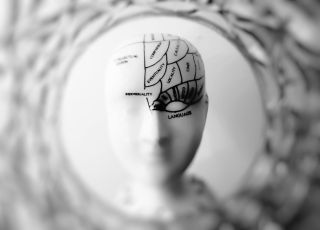Neuroscience
New Studies Prove the Brain Is Still a Mystery
There's still a lot we don't know about how the brain works.
Posted July 3, 2023 Reviewed by Devon Frye

I write on developments in neuroscience frequently, and it’s easy to get carried away with the pace and nature of the insights coming from laboratories around the world. Non-invasive techniques for peering into the brain have meant that a variety of lines of research have been able to take huge steps forward. So it’s important, at least every now and then, to remind ourselves of what we don’t know.
And that’s a lot. I was told by one neuroscientist studying Alzheimer’s, “We don’t know anything.” He was being provocative, but he was also stating a hard truth. We still don’t know for sure whether those terrible protein tangles in the brain cause Alzheimer’s, are the result of that disease, or are a contributing factor. Indeed, one brain can be a mess of amyloid plaques and the patient may show no symptoms of the disease, whereas another patient may have a normal-looking brain and yet be displaying symptoms.
And that’s just Alzheimer’s, one disease among many tragic things that can happen to the brain.
A round-up of recent results in the neuroscience world further suggests how little we actually know. A study of more than a decade’s worth of recent data indicates that Americans are getting dumber—that is, scoring worse on IQ tests—in every area except spatial reasoning. Why should that be the case? We have no idea. Researchers point to the usual suspects—social media, TV, shorter attention spans, and so on—but that’s really a list of “things I don’t like” rather than anything with a clearly established causal link to intelligence.
Another set of studies has focused on gamma waves in the brain. We use them to better communicate among regions of the brain, and they are helpful (more gamma wave activity seems to be better) for a laundry list of things, including healing, learning, memory, and sleep. Depressed people have suppressed gamma wave activity, and gamma waves originate in the same part of the brain as the sense of smell, so depressed people often have less ability to smell things. But why do any of these connections take place? We really don’t know. Gamma wave therapy may turn out to be indicated for depression. Or maybe not. It’s too early to tell.
A third study found that we all have mental cycles, lasting from several days to fifty days, that affect our behavior in various subtle ways. These patterns are predictable once you know them, and they are not consciously determined. They seem to affect mood and mental acuity. They are not apparently affected by phases of the moon, but rather by our own internal biochemical changes. But those readers who deeply believe that, say, the werewolves come out according to moon cycles, don’t despair, because we haven’t laid the whole moon influence debate to rest either.
The final study I’ll cite as an indication that we have a lot to learn about ourselves and our brains is a few years old, but remains my personal favorite. As someone who works with a lot of people on their body language, I often get asked about handshaking—what it means, how to do it in the most effective way, and why do it at all post-pandemic.
Well, it turns out that the real reason we shake hands may be to smell each other’s squalene and hexadecanoic acid. That’s right; we share chemicals that send social signals to each other, like most of the rest of animal species, and after shaking hands we unconsciously sniff our own fingers to check the other person out. But what exactly are we signaling, and what makes for a good squalene or hexadecanoic acid exchange? We have no idea.
We still have loads to learn about our brains and our means of communicating with each other, and I for one find that very exciting. We keep making progress, and we have the opportunity to keep getting smarter about our humanity, and that’s good news.


